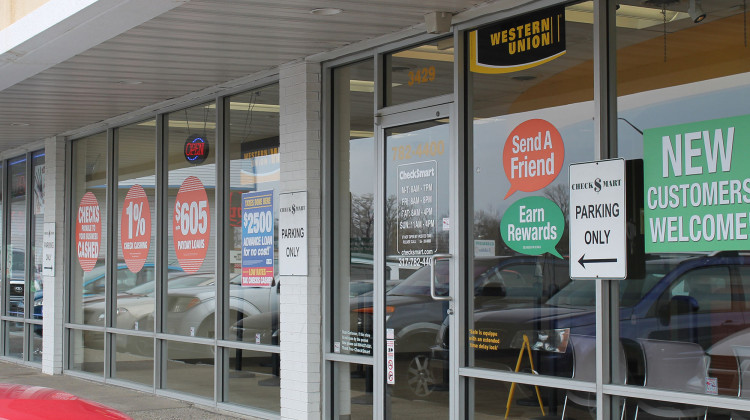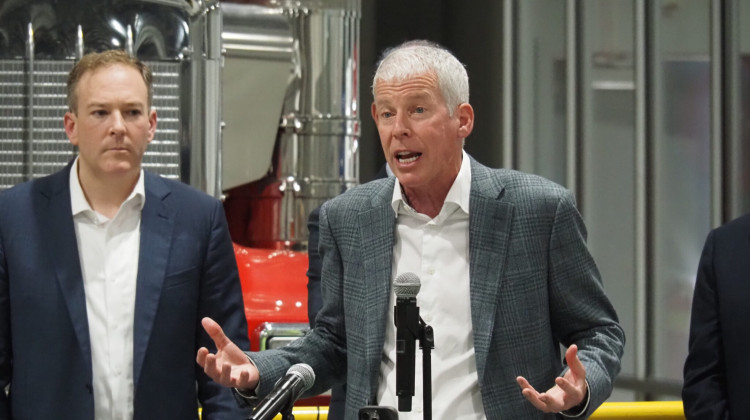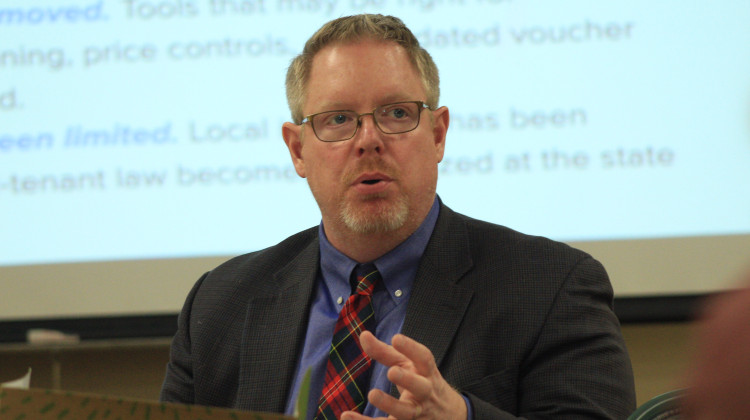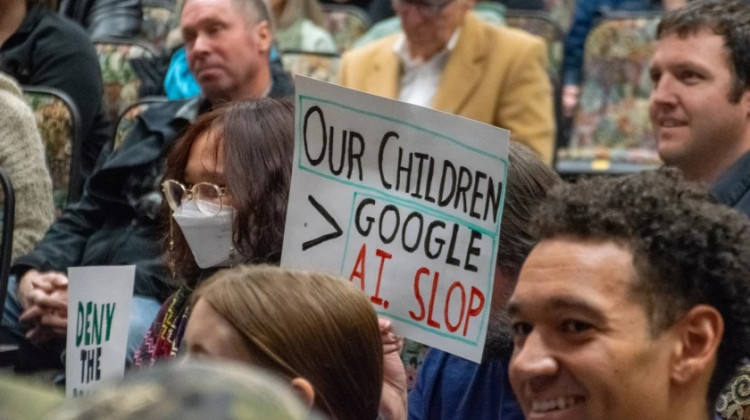
At the end of the legislative session's first half, a bill limiting payday lenders died, while another, allowing different types of high-interest loans, passed out of the Indiana Senate.
Lauren Chapman/IPB NewsAs the first half of the 2019 lawmaking session wrapped up, a bill limiting payday lenders died, while another, allowing different types of high-interest loans, passed out of the Indiana Senate.
Sen. Andy Zay (R-Huntington) says Hoosiers are struggling with credit.
“Unfortunately, 20 percent of Hoosiers have a credit score of less than 550,” says Zay. “These Hoosiers presently borrow over $1 billion in excess of 1 million loans.”
His suggestion to fix this? Expanding loan options not currently available in Indiana. Zay contends it’s a problem that there’s no middle interest rate loan type available.
“Right now there’s huge gap that takes you from about a 36 percent to 391 percent, so there’s nothing in between there,” he says. “And that’s the whole purpose of this product, is to try to create some stair steps, try to create a gradual way out of it.”
That 391 percent figure? That’s the current cap on payday lending interest in Indiana – a type of financial instrument many consumer advocates say is predatory and marketed primarily to low-income individuals. The concept is simple: get a short-term loan before the next paycheck arrives, in exchange for paying the cash back on payday with interest. In many cases, so much interest that it often adds up to many times the size of the original loan, if it keeps compounding.
A bill to cap Indiana’s rate at 36 percent failed in the first half of the legislative session, amid concerns that such a move would send consumers to unscrupulous lenders. Then, Zay’s bill creating more of the middle interest rate loans narrowly passed.
Senate Minority Leader Tim Lanane (D-Anderson) wasn’t sold, though – he sees it as another way to allow lenders to rates above a limit already in state law.
“We still have, to the best of my knowledge, a statute which prohibits these usurious rates of interest,” says Lanane. “But every time we create these type of products, we have to say, ‘oh but not for these products. These are okay to charge people rates above what we have traditionally have said are illegal rates to actually charge.’”
Sen. Greg Walker (R-Columbus), whose 36 percent cap bill failed, says debt used to be talked about seriously.
“We talk about what this debt does to mortgage our future,” says Walker. “And whether it’s speaking as a nation or as a state or as an individual household, debt is still enslavement.”
So far, 16 states and the District of Columbia have enacted the 36 percent or less cap on payday lending interest rates. Indiana Institute for Working Families Erin Macey says such a move has driven bad actors out of the market in those areas.
“In states that do that, we find that borrowers engage in a variety of other options that are often much less costly and more productive than a payday loan would be,” says Macey.
Purdue University economist Kevin Mumford has researched payday lending caps and says it’s a simple formula: when reasonable interest rates allow people to pay their loans back in full, it’s not as profitable for lenders who rely on making money from a cycle of debt building on debt.
“That’s why when it gets too low, the lenders just drop out of the market,” he says.
Mumford’s data indicates Zay might be right: a cap somewhere below the current 391 percent might still be better for consumers, but also not cause businesses to fold.
Gov. Eric Holcomb told reporters that after reading the lending bills, one word came to mind: “heartburn.” But he says it’s still too early for him decide if he would veto any legislation on the matter.
“It just didn’t wear well with me,” says Holcomb.
While disappointed with the outcome in the Senate, Prosperity Indiana policy director Kathleen Laura says her group – which advocates ways to get Hoosiers out of poverty – will continue to speak out against such lending as the one surviving bill makes it way through the House.
“We just really want that conversation to be driven by policy and data at the community level,” says Laura. “What are we seeing for consumers; what would provide them that step up on the economic ladder and not cut up the rungs from underneath them as they’re trying to build their credit.”
Hoosiers currently take out more than 1 million payday loans a year.
 DONATE
DONATE







 Support WFYI. We can't do it without you.
Support WFYI. We can't do it without you.